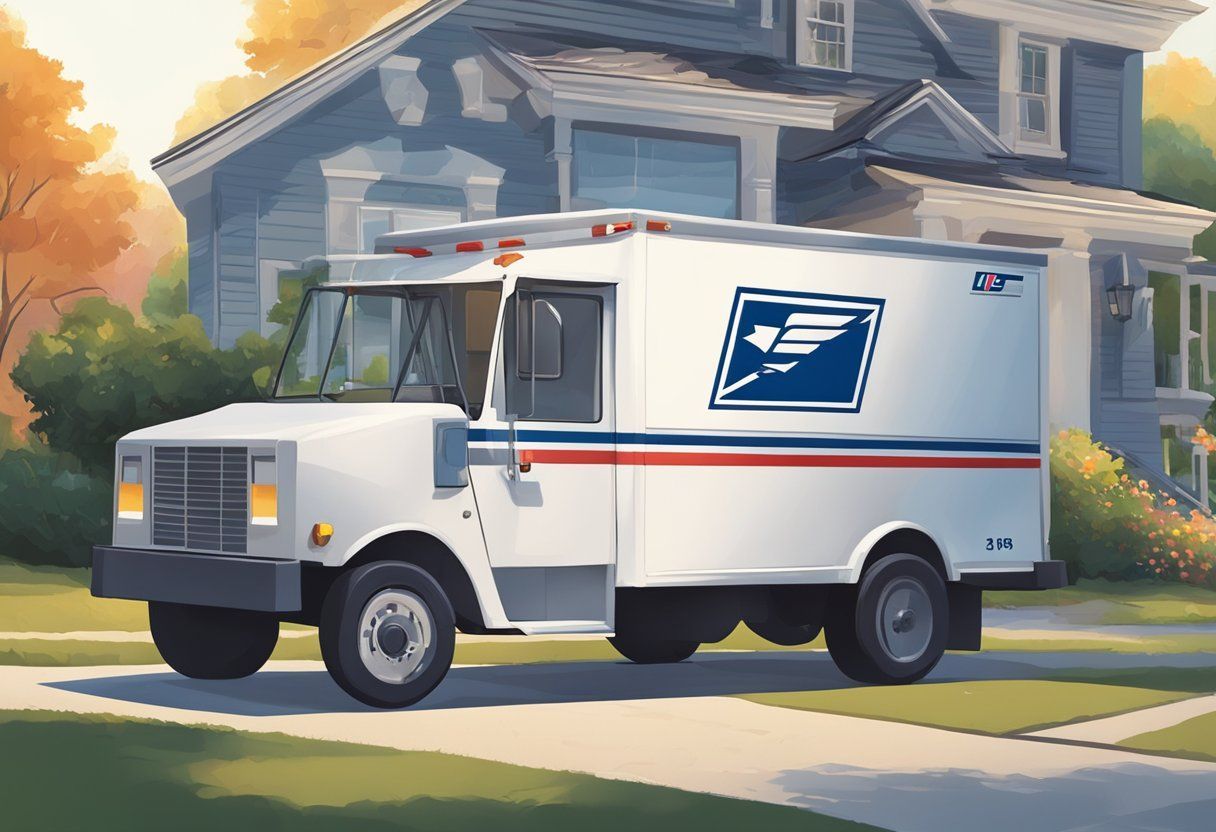Direct Mail Marketing: A Comprehensive Guide
Understanding Direct Mail
Direct Mail Fundamentals
Direct mail is a marketing strategy that involves sending physical mailpieces to a targeted audience. The United States Postal Service (USPS) is the primary carrier of direct mail in the US. Direct mail campaigns can include a variety of mailpieces, such as postcards, letters, catalogs, and brochures.
To create a successful direct mail campaign, it is important to identify your target audience and tailor your mailpieces to their interests and needs. The design and messaging of your mailpiece should be attention-grabbing and persuasive, encouraging the recipient to take action.
Benefits of Direct Mail Marketing
Direct mail marketing offers several benefits to businesses. One of the primary advantages is the ability to reach a targeted audience. With the use of mailing lists and demographic data, businesses can ensure that their mailpieces are reaching the right people.
Direct mail is also a tangible form of marketing, allowing recipients to physically hold and interact with the mailpiece. This can create a stronger emotional connection with the recipient and increase the likelihood of a response.
Additionally, direct mail campaigns can be tracked and measured for effectiveness. By including unique codes or URLs on mailpieces, businesses can track response rates and adjust their strategy accordingly.
Overall, direct mail can be a valuable addition to a comprehensive marketing strategy, providing a targeted and measurable way to reach potential customers.
Planning Your Direct Mail Campaign

Direct mail campaigns can be an effective way to reach your target audience and promote your business. However, a successful direct mail campaign requires careful planning and execution. Here are some important considerations for planning your direct mail campaign.
Target Audience Identification
Before you can create a direct mail campaign, you need to identify your target audience. This involves understanding the demographics and characteristics of the people who are most likely to be interested in your product or service. Consider factors such as age, gender, income, location, and interests. This information will help you create a more targeted and effective campaign.
Creating a Mailing List
Once you have identified your target audience, you need to create a mailing list. This can be done in-house or through a third-party provider. When creating your list, make sure to include accurate and up-to-date contact information. You may also want to consider segmenting your list based on factors such as demographics or past purchase behavior.
Designing Effective Mailpieces
The design of your mailpiece is crucial to the success of your campaign. It should be eye-catching, informative, and relevant to your target audience. Consider using bold colors, images, and clear headlines to grab the reader’s attention. Make sure the content is easy to read and includes a clear call to action. A professional designer can help ensure that your mailpiece is visually appealing and effective.
By carefully planning your direct mail campaign, you can create a targeted and effective marketing strategy that reaches your desired audience. Consider working with a professional marketing agency to help you design and execute your campaign.
Executing the Direct Mail Process

Direct mail is a powerful marketing tool that can help businesses reach out to their target audience in a personalized and effective way. However, executing a direct mail campaign requires careful planning and coordination. In this section, we will explore the key steps involved in the direct mail process.
Choosing the Right Postage
Choosing the right postage is an important aspect of any direct mail campaign. The cost of postage can vary depending on the size and weight of the mail piece, as well as the destination and delivery speed. It is important to choose a postage option that fits within your budget while still ensuring timely delivery of your mail.
Working with USPS and EDDM
The United States Postal Service (USPS) offers a range of services that can help businesses with their direct mail campaigns. Every Door Direct Mail (EDDM) is one such service that allows businesses to send mail to every household on a specific mail carrier route. This can be a cost-effective way to reach a large audience without the need for a mailing list. It is important to work closely with USPS and EDDM to ensure that your mail meets their guidelines and requirements.
Printing and Shipping Logistics
Once the mail piece has been designed and printed, it is important to ensure that it is shipped in a timely and efficient manner. This involves coordinating with a printer and a shipping provider to ensure that the mail is printed and shipped on time. It is also important to consider the logistics of delivering the mail to the post office or EDDM retail location.
In conclusion, executing a direct mail campaign involves several key steps, including choosing the right postage, working with USPS and EDDM, and coordinating printing and shipping logistics. By following these steps, businesses can ensure that their direct mail campaign is successful and reaches their target audience in an effective and personalized way.
Cost Management and Budgeting

Direct mail campaigns can be a cost-effective way to reach potential customers, but it’s important to manage costs and create a budget to ensure a successful campaign. Here are some strategies to help with cost management and budgeting:
Cost-Effective Strategies
One way to keep costs down is to use affordable materials for your direct mail pieces. Consider using postcards instead of envelopes and letters, and use black and white printing instead of color. Additionally, printing in bulk can help reduce costs per piece.
Another cost-effective strategy is to target your mailing list carefully. Sending direct mail to a smaller, more targeted group of potential customers can be more effective than sending to a larger, less targeted group.
Understanding Postage Rates and Payment Options
Postage rates can vary depending on the size and weight of your direct mail pieces, as well as the type of mailing you choose. It’s important to understand these rates and choose the most cost-effective option for your campaign.
There are also different payment options available for postage, including credit, debit, and cash. Some companies may also offer bulk postage discounts or pre-payment options to help manage costs.
By implementing these cost management and budgeting strategies, businesses can create successful and affordable direct mail campaigns to reach potential customers.
Leveraging USPS Resources

Direct mail campaigns require a lot of planning and coordination. The United States Postal Service (USPS) provides a range of resources to help businesses execute their campaigns effectively. Here are some ways businesses can leverage USPS resources:
Using USPS.com and Business Customer Gateway
USPS.com is a valuable resource for businesses looking to execute direct mail campaigns. Businesses can create and manage their USPS.com account, which provides access to a range of services, including ordering supplies, printing shipping labels, and tracking packages. The website also provides a range of tutorials and resources to help businesses learn about direct mail and how to execute campaigns effectively.
Businesses can also use the USPS Business Customer Gateway to manage their direct mail campaigns. The gateway provides a range of tools to help businesses create and manage their campaigns, including the ability to create mailing lists, design mail pieces, and track campaign performance. The gateway also provides access to USPS resources, such as postal rates, regulations, and mailing guidelines.
Direct Mail Specialists and Support
USPS delivers direct mail to millions of households and businesses every day. To help businesses execute their campaigns effectively, USPS provides direct mail specialists who can provide support and guidance throughout the campaign process. These specialists can help businesses with everything from designing mail pieces to selecting the right mailing list to ensuring compliance with postal regulations.
USPS also provides a range of resources to help businesses learn about direct mail and how to execute campaigns effectively. The USPS Delivers website provides a range of resources, including case studies, tutorials, and best practices. PostalPro is another valuable resource, providing businesses with access to a range of postal regulations, guidelines, and resources.
Overall, USPS provides a range of resources to help businesses execute successful direct mail campaigns. By leveraging these resources, businesses can ensure their campaigns are executed effectively and efficiently.
Direct Mail Materials and Formats

Direct mail is a powerful marketing tool that can help businesses reach their target audience and promote their brand. When it comes to creating effective direct mail campaigns, choosing the right materials and formats is crucial. In this section, we’ll take a closer look at some of the most popular direct mail materials and formats.
Postcards and Flyers
Postcards and flyers are two of the most popular direct mail formats. They are both affordable and easy to produce, making them ideal for businesses of all sizes. Postcards are typically used for short and sweet messages, while flyers can contain more detailed information about a product or service.
Postcards and flyers can be printed on a variety of paper stocks and can be customized with images, graphics, and text to create a unique and eye-catching mailpiece. They can also be used to promote special offers, discounts, or events.
Brochures and Letters
Brochures and letters are another popular direct mail format. They are ideal for businesses that want to provide detailed information about their products or services. Brochures can be folded in a variety of ways, making them versatile and eye-catching. Letters, on the other hand, can be personalized and used to establish a more personal connection with the recipient.
Brochures and letters can be printed on high-quality paper stocks and can be customized with images, graphics, and text to create a professional and polished mailpiece. They can also be used to promote a specific product or service, or to provide general information about a business.
When choosing direct mail materials and formats, it’s important to consider the brand and message that you want to convey. By choosing the right materials and formats, businesses can create effective direct mail campaigns that resonate with their target audience and drive results.
Tracking and Analyzing Campaign Results

Direct mail campaigns are an effective way to reach out to potential customers, but it’s important to track and analyze the results of each campaign to make informed decisions for future campaigns.
Measuring Response Rates
One way to track the success of a direct mail campaign is to measure the response rate. This can be done by including a response mechanism, such as a coupon or a reply card, in the direct mail piece. By tracking the number of responses received, marketers can calculate the response rate and determine the effectiveness of the campaign.
Another way to measure response rates is by using unique phone numbers or URLs for each campaign. This allows marketers to track the number of calls or clicks generated by each campaign and determine which campaigns are performing the best.
Adjusting Campaigns Based on Feedback
Analyzing the results of a direct mail campaign can provide valuable feedback that can be used to adjust future campaigns. For example, if a campaign generated a low response rate, marketers can review the campaign and identify areas for improvement, such as the design of the mail piece or the messaging used.
It’s important to track not only the response rates but also the conversion rates of a campaign. Conversion rates measure the number of responses that actually result in a sale or other desired action. By analyzing the conversion rates, marketers can determine which campaigns are generating the most revenue and adjust future campaigns accordingly.
By tracking and analyzing the results of each direct mail campaign, marketers can make informed decisions for future campaigns and improve the overall effectiveness of their direct mail strategy.
Frequently Asked Questions

How can direct mail marketing enhance customer engagement?
Direct mail marketing can enhance customer engagement by providing a tangible and personalized experience for the customer. Direct mail pieces can be customized to include the recipient’s name, interests, and preferences, making them feel valued and appreciated. This personal touch can lead to increased brand loyalty and repeat business.
What are the key components of an effective direct mail marketing strategy?
An effective direct mail marketing strategy should include a clearly defined target audience, a compelling offer, a strong call-to-action, and a well-designed mail piece. It’s also important to track and analyze the results of the campaign to make adjustments and improvements for future mailings.
What are the average costs associated with a direct mail marketing campaign?
The costs of a direct mail marketing campaign can vary depending on factors such as the size of the mailing list, the type of mail piece, and the postage rates. However, on average, businesses can expect to spend between $0.50 to $3.00 per piece for design, printing, and mailing.
How do direct mail marketing services measure the success of a campaign?
Direct mail marketing services typically measure the success of a campaign by tracking response rates, conversion rates, and return on investment (ROI). By analyzing these metrics, businesses can determine the effectiveness of their direct mail campaign and make data-driven decisions for future mailings.
What are the benefits of using postcards in direct mail campaigns?
Postcards are a cost-effective and versatile option for direct mail campaigns. They can be easily customized with eye-catching graphics and messaging, and their compact size makes them easy to handle and distribute. Additionally, postcards have a high open and read rate, making them an effective way to reach a large audience.
How do you select a reliable direct mail marketing company?
When selecting a direct mail marketing company, it’s important to consider factors such as their experience, reputation, and customer service. Look for a company that has a proven track record of success and offers a range of services to meet your specific needs. It’s also a good idea to read reviews and ask for references before making a final decision.…










